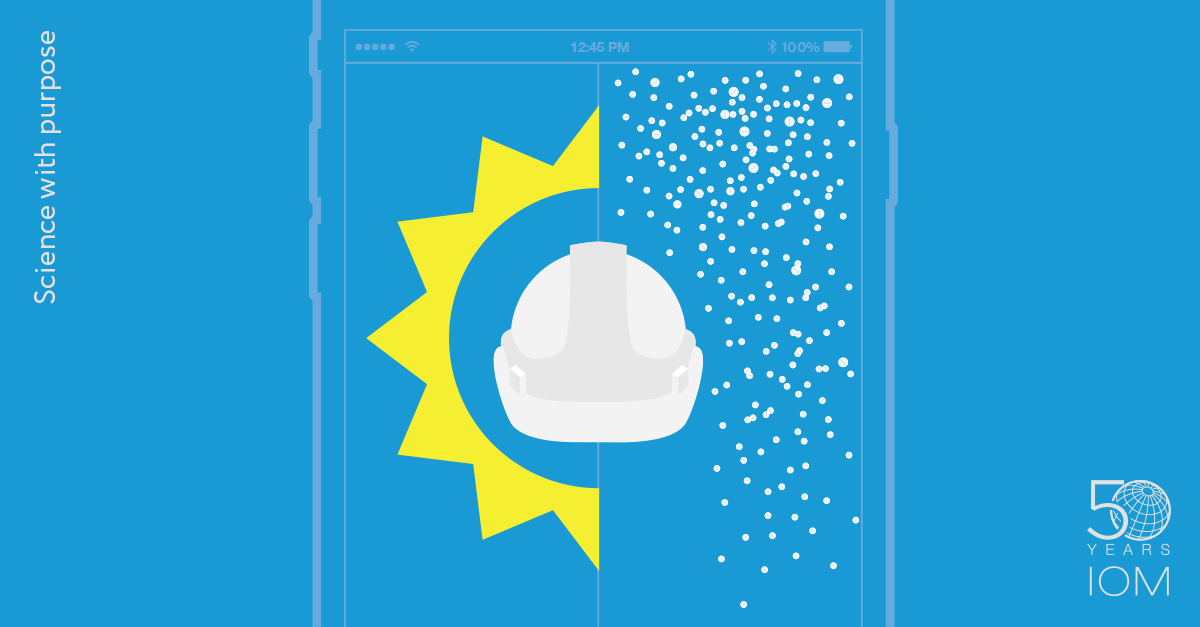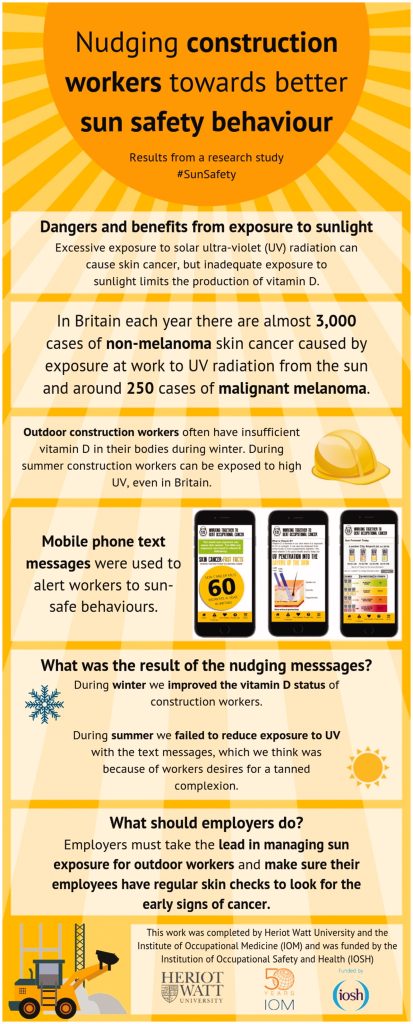
Sun safety recommendations to better protect at-risk workers
#IOM50
IOM-In-The-News


#IOM50
IOM-In-The-News
Actively managing sun exposure and providing nudging messages via text message are a few ways in which organisations can better protect outdoor workers from harmful UV radiation, a new study led by Heriot-Watt University has suggested.
In Britain each year there are almost 1,500 cases of non-melanoma skin cancer caused by exposure at work to UV radiation from the sun and around 250 cases of malignant melanoma. During winter, workers get insufficient sun exposure to make enough vitamin D to maintain good health.
A new paper, published in the Institution of Occupational Safety and Health’s (IOSH) journal, Policy and Practice in Health and Safety, has outlined some of the key recommendations for workplaces to consider in order to better protect outdoor workers, including:
The recommendations led by Heriot-Watt University, which found almost half of outdoor workers on the construction sites they investigated had insufficient vitamin D during the winter.
However, the team found during the summer the desire to get a sun tan remained high among workers, with many being exposed to high UV radiation, increasing their risk of developing non-melanoma skin cancer.
Professor John Cherrie, Principal Investigator on the research from Heriot-Watt University and the Institute of Occupational Medicine, said: “In Britain we love the sun and having a sun tan, but unprotected exposure to the summer sun can cause irreversible damage to our skin and ultimately may lead to a diagnosis of skin cancer.
“Employers must take the lead in managing sun exposure for outdoor workers and make sure their employees have regular skin checks to look for the early signs of cancer.”
Mary Ogungbeje, Research Manager at IOSH, said: “The findings highlight that there’s still work to do in promoting good sun safety behaviour in the workplace. Both workers and employers have a part to play in reducing the risks of excessive UV exposure.
“We encourage workers and employers to be more aware of occupational cancer and take positive steps to reduce the risks.”
The Institution of Occupational Safety and Health (IOSH) has produced a range of resources and guidance on the risks of solar radiation and how to reduce exposure as part of its No Time to Lose campaign to tackle occupational cancer. More information is available here: https://www.notimetolose.org.uk/free-resources/solar-pack-taster/
The paper, ‘Nudging construction workers towards better sun-safety behaviour: summary of the evidence for practitioners’, published in the Institution of Occupational Safety and Health’s journal, Policy and Practice in Health and Safety, is available here: https://www.tandfonline.com/doi/full/10.1080/14773996.2019.1708614
The study team included researchers from Heriot-Watt University, the University of Edinburgh and the Institute of Occupational Medicine and was funded by IOSH.
Notes to editors:
The Institution of Occupational Safety and Health (IOSH) is the world’s leading chartered professional body for people responsible for safety and health in the workplace. We have more than 47,000 members in over 130 countries.
We act as a champion, adviser, advocate and trainer for safety and health professionals working in organisations of all sizes. Our focus is to support our members in their efforts to create workplaces that are safer, healthier and more sustainable.
Our shared objective is a world where work is safe and healthy for every working person, every day. Through our 2017-2022 strategy, ‘WORK 2022 – shaping the future of safety and health’, we will seek to enhance the occupational safety and health profession, build strategic collaborative partnerships across industry and strengthen our influence globally through impactful research and development.
It was published online: 08 Jan 2020
